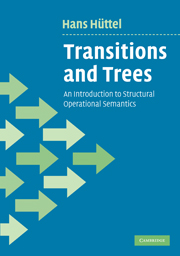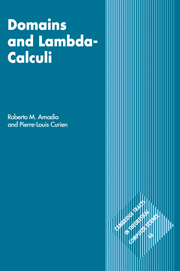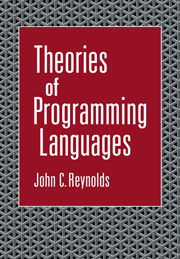Transitions and Trees
Structural operational semantics is a simple, yet powerful mathematical theory for describing the behaviour of programs in an implementation-independent manner. This book provides a self-contained introduction to structural operational semantics, featuring semantic definitions using big-step and small-step semantics of many standard programming language constructs, including control structures, structured declarations and objects, parameter mechanisms and procedural abstraction, concurrency, nondeterminism and the features of functional programming languages. Along the way, the text introduces and applies the relevant proof techniques, including forms of induction and notions of semantic equivalence (including bisimilarity). Thoroughly class-tested, this book has evolved from lecture notes used by the author over a 10-year period at Aalborg University to teach undergraduate and graduate students. The result is a thorough introduction that makes the subject clear to students and computing professionals without sacrificing its rigour. No experience with any specific programming language is required.
- Does not require experience with any specific programming language
- Exercises and examples enable readers to test their own understanding of the material, while answers and hints are available online
- Material class-tested over 10 years at undergraduate and graduate level
Reviews & endorsements
"Each chapter of the book contains various examples and problems, making it very suitable for teaching purposes. There are more than enough bibliographical directions for starting a thorough study of any of the presented topics. The book does not limit itself to structural operational semantics; it provides introductory information on several related topics. All of these aspects make the book a well-rounded presentation on the subject. The book can be successfully used by students, professionals, and researchers as a good introduction to the semantics of programming languages that will help them describe and reason about the behavior of programs."
G. Ciobanu, Computing Reviews
"Transitions and Trees is a detailed, rigorous, and thorough textbook on structural operational semantics on an advanced undergraduate level. The book's strength is the comprehensive coverage of many aspects of structural operational semantics. Transitions and Trees is generally well written and the large number of examples and interspersed exercises help in understanding the material."
Stephan Falke for SIGACT News
Product details
June 2010Paperback
9780521147095
290 pages
246 × 174 × 15 mm
0.53kg
25 b/w illus. 75 tables 85 exercises
Available
Table of Contents
- List of illustrations
- List of tables
- Preface
- About the illustrations
- Part I. Background:
- 1. A question of semantics
- 2. Mathematical preliminaries
- Part II. First Examples:
- 3. The basic principles
- 4. Basic imperative statements
- Part III. Language Constructs:
- 5. Control structures
- 6. Blocks and procedures (1)
- 7. Parameters
- 8. Concurrent communicating processes
- 9. Structured declarations
- 10. Blocks and procedures (2)
- 11. Concurrent object-oriented languages
- 12. Functional programming languages
- Part IV. Related Topics:
- 13. Typed programming languages
- 14. An introduction to denotational semantics
- 15. Recursive definitions
- Appendix A. A big-step semantics of Bip
- Appendix B. Implementing semantic definitions in SML
- References
- Index.




